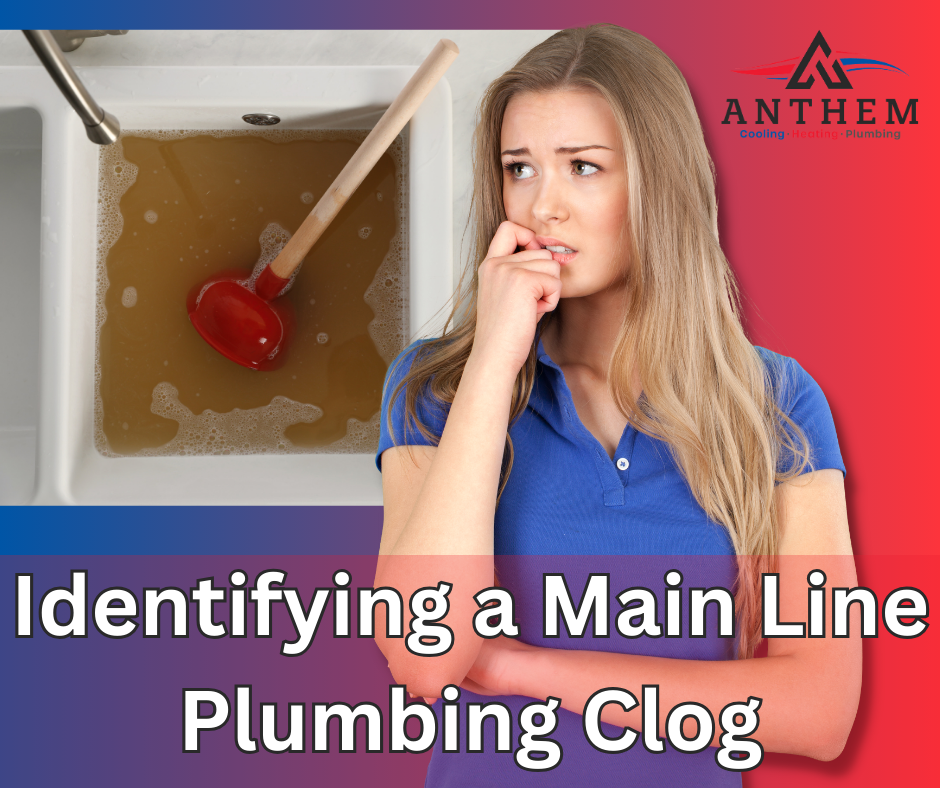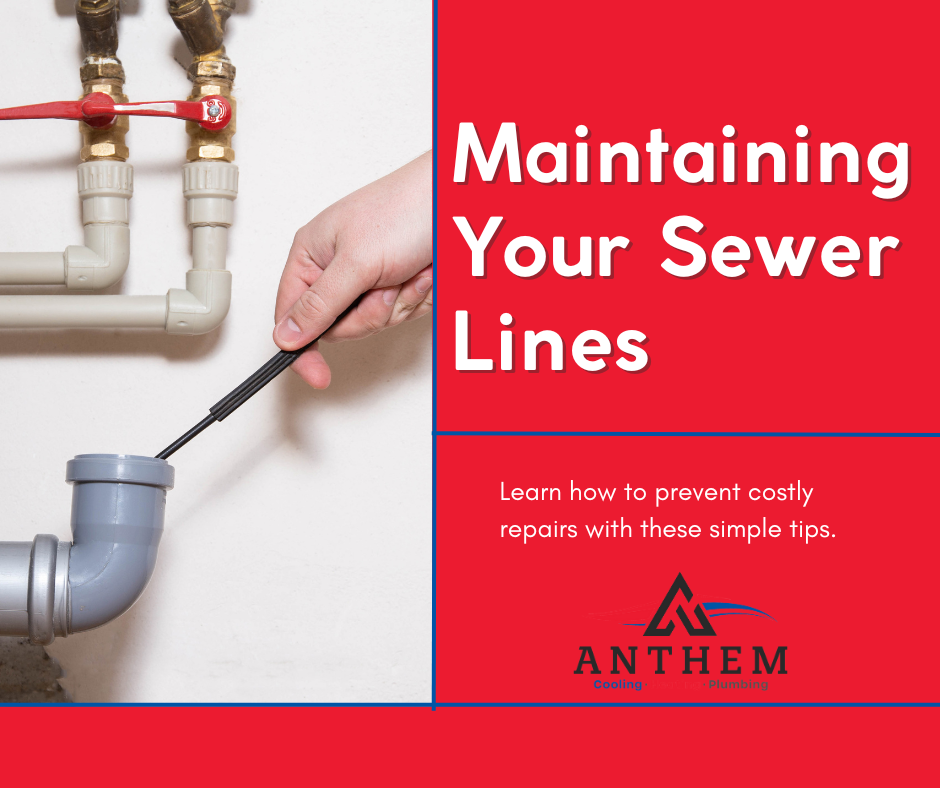
Ever found yourself knee-deep in water, scrambling for a quick fix to a gushing pipe? That’s what dealing with a main line plumbing clog feels like. It’s an unexpected visitor you never want to entertain.
Picture this: your dreamy bubble bath turning into a swamp or your dishwasher transforming into Niagara Falls…in reverse! Frustrating, isn’t it?
A little knowledge about these sneaky culprits can go a long way though. Imagine identifying the early signs of such nuisances before they turn catastrophic. Or even better, preventing them altogether!
We’re about to plunge headfirst into everything there is to know about main line plumbing clogs – from understanding their nature and symptoms right up to comparing DIY techniques versus professional solutions.
Table Of Contents:
- Understanding Main Line Plumbing Clogs
- Identifying a Main Line Plumbing Clog
- The Impact of Main Line Plumbing Clogs
- Preventive Measures Against Main Line Clogs
- Professional Solutions for Main Line Plumbing Clogs
- DIY Techniques to Address Main Line Plumbing Clogs
- Comparing Professional Services vs. DIY Methods
- Conclusion
Understanding Main Line Plumbing Clogs
Main line plumbing clogs can be a homeowner’s worst nightmare. They’re the troublemakers that disrupt your home’s normal flow, much like a traffic jam on a busy highway.
The main sewer line is what connects all your home’s plumbing to the city sewer system or septic tank. When it gets blocked, things get messy fast. You might notice water backing up in strange places, such as tubs and showers when you flush toilets or use sinks.
But why does this happen? The primary culprits are usually tree roots seeking moisture and nutrients. Over time they can infiltrate even tiny cracks in the pipe and eventually cause blockages.
In addition to natural causes, human actions also contribute significantly to main line clogs. Flushing items down toilets that aren’t meant for them (like diapers or paper towels) will do it every time.
Bear in mind that dealing with main line clogs needs professional help most of the time because of their complexity compared to ordinary drain issues – think surgery vs. applying a bandage.
Identifying a Main Line Plumbing Clog

But, several telltale signs suggest you may have this issue on your hands.
One common symptom is water backing up out of drains around the house. If multiple fixtures are affected at once, especially in lower levels or basements, it’s likely a main line clog. You might also notice gurgling sounds coming from your drains or toilets.
A more extreme sign is sewage seeping into bathtubs and showers when no other water source is being used – that’s because these outlets typically sit at the lowest point in most homes and thus become an escape route for wastewater unable to pass through the blocked pipe.
The Toilet Test
If you suspect a mainline blockage but aren’t sure yet, here’s something simple: The toilet test. Toilets connect directly to the sewer system via large pipes – so they’re usually hit first by any blockages upstream.
To conduct this test, flush all toilets in your home simultaneously. Should any of them overflow or drain slowly during flushing while others operate normally; chances are good there’s an obstruction somewhere downstream affecting specific branches only rather than the whole system itself.
Contacting Professionals
In case symptoms persist after trying DIY methods like plungers or chemical drain cleaners – it’s probably time for professional help before things get worse. A qualified plumber can accurately diagnose and fix the issue using specialized tools like sewer cameras.
Remember, if it’s a main line clog – you’re not just dealing with any old blockage. It’s potentially a significant problem that could lead to more serious damage down the road if left untreated. Here is what happens when things get worse.
Key Takeaway:
Spotting a main line plumbing clog can be tricky, but telltale signs include multiple backed-up drains and gurgling sounds. More severe symptoms could be sewage seeping into showers or bathtubs. The toilet test—flushing all toilets at once to check for blockages—can help confirm suspicions. However, if your DIY attempts don’t yield results, it’s time to call in the professionals.
The Impact of Main Line Plumbing Clogs
Imagine waking up to a flooded basement or sewage backup in your home. That’s the harsh reality when main line plumbing clogs aren’t fixed promptly. It’s not just an inconvenience; it’s a threat to your property and health.
Main line clogs can cause significant damage, such as water damage, which is costly to repair and could decrease the value of your home. But there are more serious issues at stake too.
Prolonged exposure to standing water from backups may lead to mold growth—a health hazard for anyone with allergies or respiratory problems. Plus, if left untreated, these clogs can also result in raw sewage backing up into your home through drains, toilets, and even bathtubs—an unsanitary mess no one wants.
Bottom line? The impact extends beyond financial costs—it compromises safety and hygiene too. So make sure you act fast when faced with a main line plumbing issue because delaying won’t make things better but worse.
Preventive Measures Against Main Line Clogs
Main line clogs can cause serious problems, but with the right measures, you can prevent them from happening. It all starts by being mindful of what goes down your drains.
First, never pour fats or oils into your sink. They solidify in pipes and lead to blockages. Use a grease trap, it’s an affordable way to catch these substances before they reach your plumbing system.
Avoid flushing non-dissolvable items like wipes or sanitary products as well; even if labeled ‘flushable’, they often aren’t. These culprits are notorious for causing clogs in main lines.
Regular Drain Cleaning is Key
To keep things flowing smoothly, regular drain cleaning should be part of your home maintenance routine. Simple DIY methods include using vinegar and baking soda – a cheap yet effective solution against minor build-ups. Bob Vila explains how here.
If DIY isn’t enough though, professional drain cleaning services offer more thorough results. The cost may seem steep at first glance but compared to dealing with damage from a severe mainline clog later on – it’s worth every penny.

Maintaining Your Sewer Lines
Last but not least: sewer line inspection and maintenance is crucial because damaged lines attract debris leading to major blockages over time. Don’t wait until disaster strikes – get them checked by professionals on a regular basis.
Remember, the key to avoiding main line clogs is proactive prevention.
Professional Solutions for Main Line Plumbing Clogs
If your DIY efforts don’t do the trick, it’s time to call in professionals. But who should you turn to? There are many experts out there, from certified plumbers to specialized drain cleaning companies.
Professional drain cleaners use techniques such as hydrojetting and video inspections. These tools let them diagnose problems accurately and fix clogs without damaging your pipes.
Hydrojetting uses high-pressure water jets to break up stubborn blockages while video inspection involves sending a camera down the line to locate the problem area. The pros also have access to industrial-strength chemical solutions if needed.
The Cost of Professional Services
You might be wondering about the cost now. On average, hiring a pro can set you back anywhere between $100-$200. This may seem steep compared with DIY methods but remember – we’re talking about safeguarding your home here.
Making the Right Choice
In deciding whether or not you need professional help, consider factors like the severity of the clog and potential damage if things go wrong. When in doubt, always opt for expert intervention because main line plumbing issues aren’t something anyone wants hanging over their head.
DIY Techniques to Address Main Line Plumbing Clogs
If you’re up for a challenge, there are ways you can tackle main line plumbing clogs on your own. Let’s look at some methods that might just help.
Using a Plunger
A plunger isn’t only for toilet clogs. Give the plunger a try if the blockage isn’t too severe, then cover any overflow outlets and give it your best effort. Make sure to cover any overflow outlets before starting and give it your best shot.
The Drain Snake Method
A drain snake or auger is more effective when dealing with stubborn clogs. Push the snake down until you feel resistance – that’s your clog. Turn and push to break it up.
Eco-Friendly Solutions
You could also use eco-friendly options like vinegar and baking soda mixture. Pour this solution into the drain, wait about 15 minutes then rinse with hot water. Note: This method might not work on severe clogs but worth giving a try as an initial step because of its non-corrosive nature.
Remember: While these DIY solutions can fix minor issues, don’t hesitate to call in professionals if things get tough or if problems persist.
Comparing Professional Services vs. DIY Methods
If you’ve got a main line plumbing clog, two options might cross your mind: calling in the pros or rolling up your sleeves for some do-it-yourself action. Both have their merits, but they’re different games entirely.
Professional services, like Anthem’s team, bring expertise and specialized equipment to the table. They can get deep into pipes to fix even stubborn clogs without causing further damage. But quality comes at a price, which is something homeowners need to consider.
On the flip side, DIY methods could save you money upfront. Tools, like drain snakes and plungers, are relatively inexpensive and can tackle simpler clogs effectively if used correctly. Here’s where you can get them. But remember that these tools require effort on your part and may not work on more complex issues.
Both approaches have their benefits depending on the situation at hand; it’s akin to choosing between ordering pizza or making one from scratch based on how hungry you are.
Conclusion
Remember: prevention always beats cure. We shared ways to keep these pesky problems at bay, saving you from future headaches.
Yet if they strike despite your best efforts, professional solutions and DIY techniques are there for rescue. Just remember – each has its pros and cons!
You’re now equipped with knowledge that not only helps spot a main line plumbing clog early but also offers effective ways of dealing with it. That’s one less thing to worry about in-home maintenance! Keep this guide handy; you never know when it might come in use.








No comment yet, add your voice below!